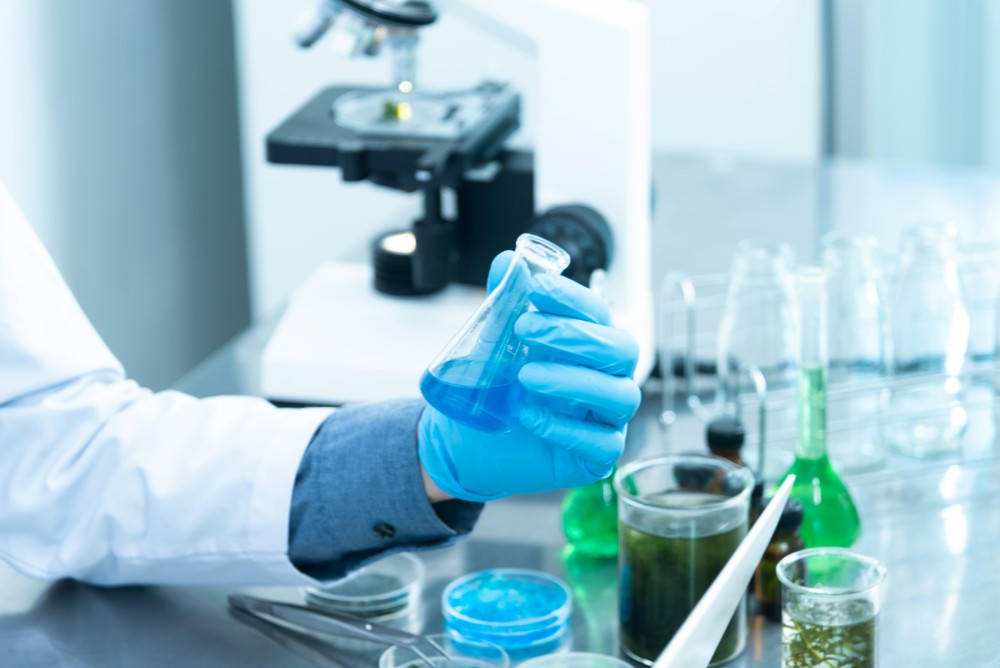
Laboratory Fume Extraction
Our Purex machines are designed specifically to protect lab technicians from harmful fumes and chemicals used in medical treatments or cleaning processes.
From pharmaceutical research to equipment sterilisation, laboratory environments demand precise control over air quality. Purex fume extraction systems are designed to efficiently remove hazardous vapours and particulates generated during testing, analysis, and treatments. Our advanced filtration technology helps your organisation maintain compliance with safety standards while supporting the reliability of your laboratory processes.
Typical applications
Decontamination
Ozone (O₃) has various applications throughout the medical industry, including sterilisation and water purification. However, it’s most commonly used in labs as a powerful disinfectant.
Excessive exposure to Ozone can cause shortness of breath, induce chest pains and even damage lung tissue. That’s why we created a powerful fume extraction system specifically designed to combat Ozone exposure and protect lab technicians.
Clinical Research
Formalin, also known as formaldehyde solution, is often used as a preservative in medical laboratories. However, even small amounts of formaldehyde fumes can irritate the eyes, nose and throat.
Long-term exposure can be extremely hazardous, causing severe coughing or even choking, so labs must be equipped with effective fume extraction systems to ensure health and safety compliance and protect their technicians.
Recommended machines
-
 iFume 400i Ozone
iFume 400i Ozone
iFume 400i Ozone
The iFume 400i Ozone has been designed specifically to extract hazardous particles and chemicals produced by Ozone applications, an excellent solution throughout several sectors, including the medical sectors.
View product -
 400i Ozone
400i Ozone
400i Ozone
The Purex 400I – OZONE – Designed specifically to extract hazardous particles and chemicals produced by Ozone applications, an excellent solution throughout several sectors, including the Medical sectors.
View product -

650
The Purex 650 is a machine designed for arm extraction, with its powerful capabilities and cost efficient operations, this machine has been designed to accommodate multiple industries.
View product -
 800 1 Tier
800 1 Tier
800
The 800 – Equipped with one large main filter is designed for a variety of work operations where a small foot print is required.
View product -
 200
200
200
The 200 is a versatile machine for use within the Electronics industries due to its small footprint and powerful air flow abilities.
View product
Industry Insights
-

How Regular LEV Servicing Prevents Health Hazards
You might not think it, but regular LEV maintenance is a very important aspect in safeguarding for the health and safety of workers in environments wh... Read more -

Guide To LEV Testing
If your business uses a fume extraction system, you’ve probably heard of an LEV test. But what exactly does LEV actually stand for, and what is... Read more -

Understanding the Fumes Generated in Oil Misting Processes
In industrial environments where machinery is an integral part of daily operations, ensuring a safe and healthy workspace is crucial. As technology ad... Read more
Need help choosing?
Speak to a member of our expert team to help choose the most suitable machine for your requirements.
FAQs
Fume extraction systems are important in laboratory settings because they are designed to capture and remove harmful fumes, gases or particles generated during lab processes, such as ozone sterilisation or formaldehyde use.
In lab environments, proper fume extraction ensures better safety for technicians, proper regulatory compliance and helps to maintain the air quality required for sensitive research or medical tasks.
Examples of lab applications that require fume extraction units include:
- The decontamination of equipment using ozone or chemical agents
- Clinical research involving formaldehyde, fixatives or toxic vapours
- The incineration, neutralisation or disposal of hazardous substances like acids or biohazardous waste
When selecting a fume extraction unit, some key factors you should consider include:
- The airflow requirement (m³/h), based on the size of your laboratory and the intensity of fume generation.
- The type of contaminants (e.g., ozone, formaldehyde, particulates) and corresponding filter/media compatibility.
- Space constraints in the lab.
If you need support selecting the most suitable fume extractor for your laboratory, enquire with one of our professionals today.